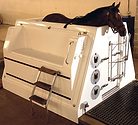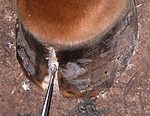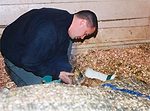Advertise Follow Us
Articles Tagged with ''treatment''
While much has been learned about laminitis over the past 25 years, it's still critical to evaluate each horse
Read More
Basics & Patience Can Go a Long Way
Prominent equine vet Al Kane knows first-hand that even neglected, foundered feet might respond to fundamental shoeing techniques
Read More
New Technology
Cold Moving Water, Plus Salt, Equals Spa Therapy
More technically known as cold water hydrotherapy, the treatment hasn’t caught on in the United States yet, but it has elsewhere
Read More
Navicular Problems Can Trap Farriers
Horseshoers can make first assessment of potential navicular problems, but ultimate diagnosis requires veterinary involvement to avoid liability
Read More
Recognize Pedal Osteitis & Stop It Cold
The signature sign is a crescent-shaped bruise on the sole along the edge of the coffin bone, but the condition is not always so easy to diagnose
Read More
Treating Hoof Cracks And Other Hoof Maladies
Cornell farrier offers primer on therapeutic cases
Read More
Know The Critical Changes With Laminitis
Here are 21 things to be on the lookout for when suspecting laminitis
Read More
Maggot Therapy: Old Technique Finds New Life
Vet uses fly larvae in treatment of hoof infections
Read More
Natural Healing Technique Offers New Treatment Options For Hoof Wounds
Growth factor platelets are providing a new way of dealing with hoof cracks and other hoof injuries
Read More












